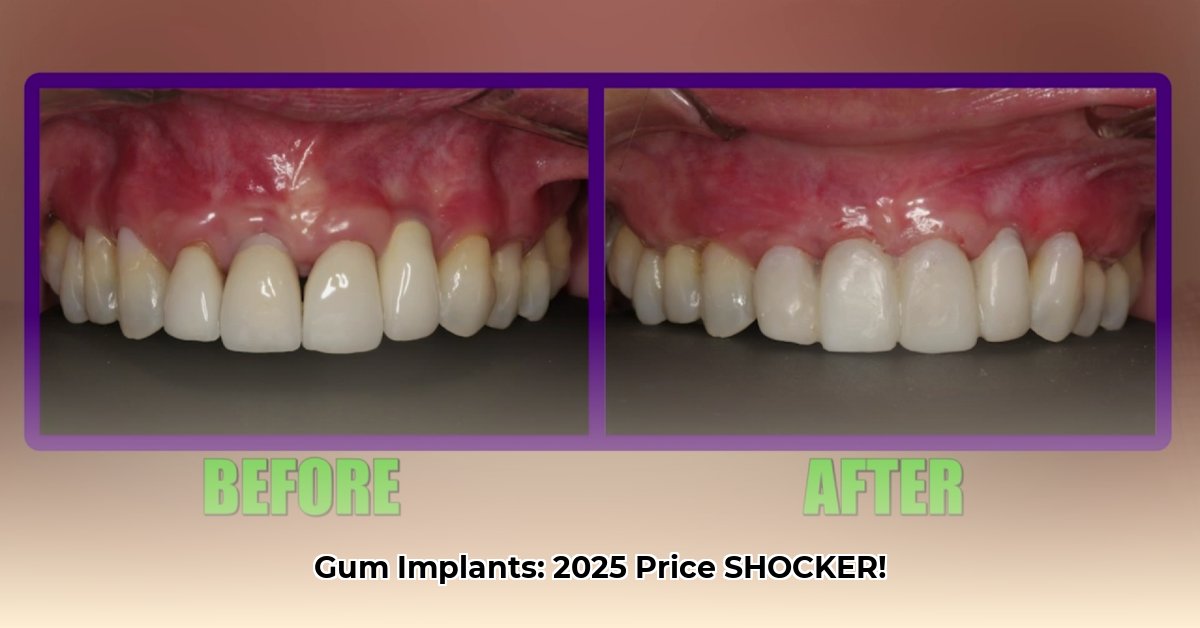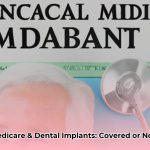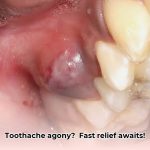Worried about the cost of gum grafting? It’s a common concern. The price can vary, but knowing what influences it is key to making informed choices. This guide will help you understand everything involved, from the types of grafts and their prices to finding the right dentist and figuring out how to pay for it. We’ll explore what makes the price increase or decrease, finding affordable options, and how to finance your procedure. For information on Medicare coverage for related procedures, see Medicare and dental implants. Let’s get you the information you need to care for your smile without financial strain.
Gum Graft Cost: Making Sense of the Numbers
Let’s discuss gum grafts. The cost is a big question and, understandably, concerning. Prices vary widely from hundreds to potentially over four thousand dollars. Let’s break down what drives those costs so you can make an informed decision to achieve optimal periodontal health.
What Impacts the Price of a Gum Graft?
Several factors influence the final cost. Think of it like renovating a bathroom; the materials, the contractor’s experience, and the location all play a role.
1. The Type of Gum Graft: Different procedures exist, and they don’t all cost the same. A connective tissue graft, often a preferred method, is usually pricier because it’s more complex and often yields excellent results. Other options, like a free gingival graft or a pedicle graft, might be less expensive but may not always provide the same level of success or be suitable for every situation. Your dentist will help determine the best choice for your needs and oral tissue regeneration. Each type has advantages and disadvantages regarding recovery time, aesthetics, and suitability for specific types of gum recession.
2. Your Periodontist’s Expertise: Just like choosing a specialist, selecting an experienced periodontist matters. Highly skilled and experienced professionals often charge more. Their expertise usually translates to better results and fewer complications, potentially saving you money by avoiding costly revisions. Look for board certification and consider their years of experience performing gum graft procedures.
3. Where You Live: The cost of living, and thus medical procedures, varies dramatically across different regions. Procedures in urban centers tend to be pricier than those in more affordable areas. Research costs in different areas and consider traveling if it significantly reduces costs while maintaining quality.
4. Technology Used: Some clinics utilize advanced technologies such as 3D imaging for planning or laser-assisted procedures. These technologies can improve precision and outcomes but may also increase costs, so it is important to discuss whether these technologies are necessary for your specific case.
5. Anesthesia: The type of anesthesia used during the procedure also contributes to the overall cost. Local anesthesia is generally less expensive than IV sedation or general anesthesia. Discuss the options with your periodontist to determine the best approach for your comfort and safety, keeping in mind the cost implications.
6. Number of Teeth Treated: The extent of gum recession and the number of teeth requiring grafting significantly impacts the overall cost. Treating multiple teeth or a large area will naturally be more expensive than addressing a single tooth.
7. Bone Grafting (if needed): In some cases, bone grafting may be necessary to provide adequate support for the gum graft. This adds to the complexity and cost of the procedure. The need for bone grafting is determined during the initial evaluation.
8. Post-Operative Care: Costs associated with post-operative care, such as medications (pain relievers, antibiotics), special mouth rinses, and follow-up appointments, contribute to the total expense. Inquire about these costs upfront.
9. Insurance Coverage: This is a significant factor. How much your insurance covers depends on your specific plan and whether the procedure is deemed medically necessary or primarily cosmetic. Some plans may cover a significant portion, while others may provide minimal or no coverage. It’s essential to contact your insurance provider to clarify coverage before scheduling the procedure; this may involve dental insurance pre-authorization. Some insurance companies may require documentation, such as photographs or periodontal charting, to justify the medical necessity of the procedure.
Different Gum Graft Types and Their Costs: A Closer Look
Let’s dive into the specifics of the different types of grafts. These are average cost ranges and can vary based on the factors discussed earlier.
| Graft Type | Description | Estimated Cost Range (USD) | Pros | Cons | Ideal Scenario |
|---|---|---|---|---|---|
| Connective Tissue Graft | Tissue is taken from the palate (the roof of your mouth). Often considered the most effective. | $2,500 – $4,900 | Excellent results, often the most effective solution, relatively low risk of complications | More invasive procedure, slightly more healing time, possible discomfort at the donor site | Moderate to severe gum recession, good tissue thickness in the palate. |
| Free Gingival Graft | Tissue is harvested directly from the surface of the palate. | $1,800 – $3,500 | Can be effective for increasing the band of attached gingiva, simpler technique | Can be less aesthetically pleasing (color mismatch), may not be suitable for root coverage | Thin gum tissue, need for increased tissue thickness, less concern for aesthetics. |
| Pedicle Graft | A flap of gum tissue is moved from a nearby area. The tissue remains attached at one end. | $2,000 – $4,000 | Minimally invasive, often faster recovery time, good color match | Limited tissue availability, may not be suitable for extensive gum recession, requires sufficient adjacent tissue | Localized recession with sufficient adjacent gum tissue. |
| Alloderm Graft | Uses processed, sterilized human tissue from a donor (acellular dermal matrix). | $2,200 – $4,500 | No palatal donor site, reduced post-operative discomfort | Higher cost than some other tissue sources, potential for rejection, although rare | Patients who prefer to avoid palatal surgery, limited donor tissue availability. |
Disclaimer: These costs are estimates and can vary significantly based on individual circumstances.
Finding the Right Periodontist: Your Key to Success
Choosing the right periodontist is crucial for the procedure’s success and your peace of mind. Here’s a straightforward approach:
Step 1: Check Credentials: Ensure they are licensed and board-certified in periodontics. Verify their standing with your state’s dental board.
Step 2: Read Reviews and Testimonials: Online reviews can offer valuable insights into a periodontist’s expertise and patient experience. Look for consistent feedback and check multiple sources.
Step 3: Ask for Referrals: Ask your general dentist for a referral to a trusted periodontist. Recommendations from other healthcare professionals can be valuable.
Step 4: Schedule Consultations: Don’t settle for the first consultation. Meet with multiple periodontists to discuss your case, treatment options, and expected outcomes.
Step 5: Get Multiple Quotes: Contact several periodontists in your area, explaining your needs, and compare their quotes side-by-side. Pay attention not only to the price but also to the overall treatment plan for periodontal disease, including follow-up care and maintenance.
Step 6: Evaluate Communication and Comfort Level: Choose a periodontist who communicates clearly, answers your questions thoroughly, and makes you feel comfortable and confident in their care.
Insurance and Payment Plans: Managing the Finances
Insurance coverage for gum grafting is highly variable. Some insurance companies cover procedures deemed medically necessary to prevent further gum disease or tooth loss. Procedures considered primarily cosmetic might have limited or no coverage. It’s crucial to contact your insurance company beforehand to understand your coverage.
Before proceeding, ask your dental office to submit a pre-authorization to your insurance company so they can let you know exactly what they will and will not pay.
If you need help managing the costs, explore payment options such as:
-
CareCredit: This is a widely-used financing option designed for healthcare expenses, offering low-interest or deferred-interest plans.
-
Dental Financing Companies: Many companies offer flexible payment plans tailored to dental procedures, allowing you to spread the cost over time.
-
Dental Savings Plans: These plans often provide discounts on various dental services, including gum grafting and dental implants, in exchange for an annual fee.
-
In-House Payment Plans: Some dental offices offer in-house payment plans, allowing you to pay for the procedure in installments directly to the practice.
-
Grants and Charitable Organizations: Explore whether there are any grants or charitable organizations in your area that provide financial assistance for dental procedures.
Preparing for Gum Graft Surgery
1. Medical Evaluation: Your periodontist will review your medical history and conduct a thorough oral examination to assess your overall health and determine the suitability of gum grafting.
2. Periodontal Cleaning: Before the surgery, you may need a professional dental cleaning to remove plaque and tartar from your teeth and gums. This helps reduce the risk of infection and improves the healing process.
3. Antibiotics: In some cases, your periodontist may prescribe antibiotics to take before or after the procedure to prevent infection.
4. Smoking Cessation: If you smoke, it’s essential to quit before gum grafting surgery. Smoking impairs blood flow and can hinder the
- Unlock Young Doctors’ Work-Life Balance: Actionable Strategies Now - December 2, 2025
- Unlock Life Harmony: Work-Life Integration Guide - November 30, 2025
- Unlock Work-Life Harmony:Your Guide to Integration - November 27, 2025
















